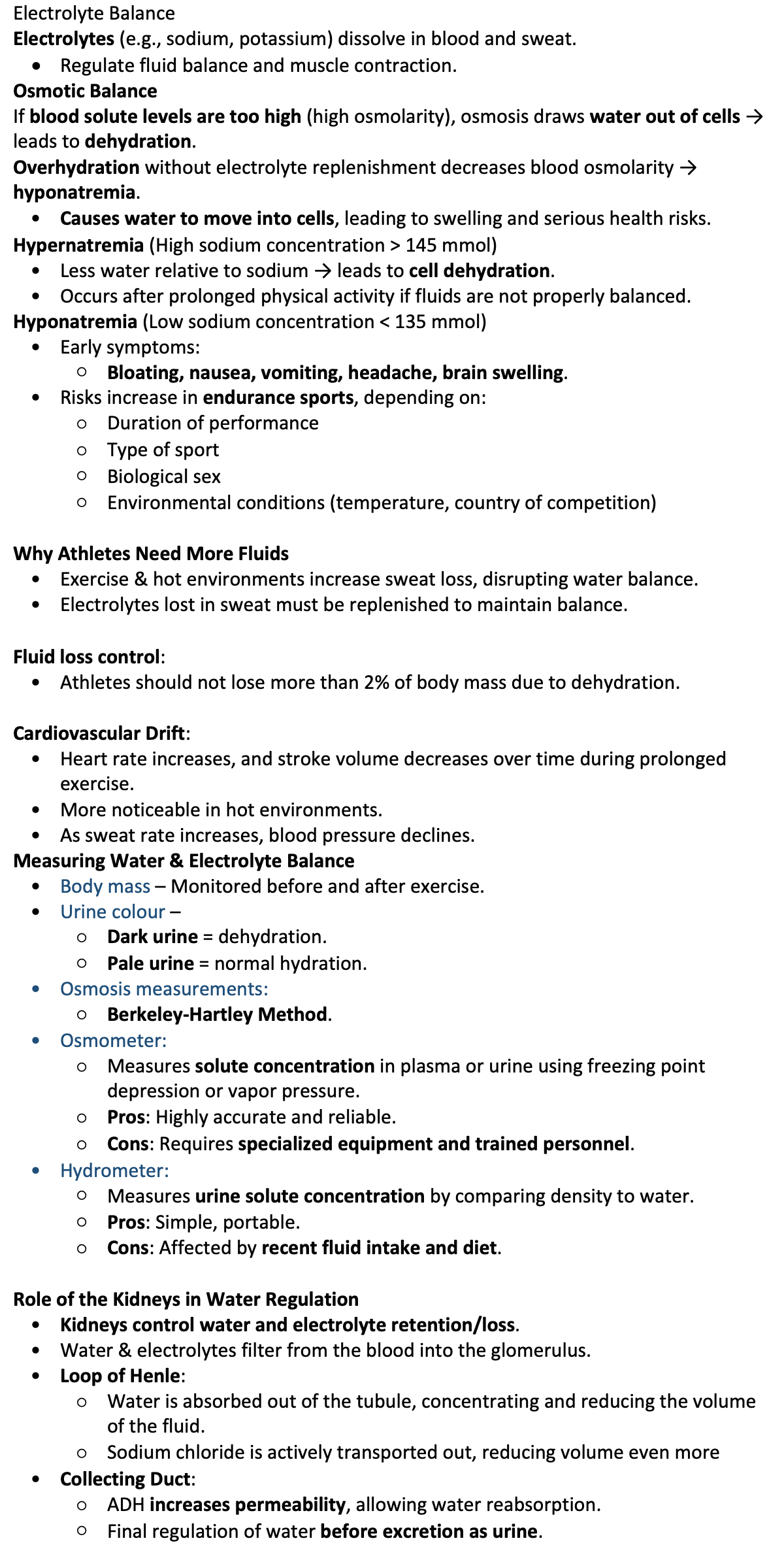Regulating Water Balance
Electrolyte Balance
Electrolytes (e.g., sodium, potassium) dissolve in blood and sweat.
Regulate fluid balance and muscle contraction.
Osmotic Balance
If blood solute levels are too high (high osmolarity), osmosis draws water out of cells → leads to dehydration.
Overhydration without electrolyte replenishment decreases blood osmolarity → hyponatremia.
Causes water to move into cells, leading to swelling and serious health risks.
Hypernatremia (High sodium concentration > 145 mmol)
Less water relative to sodium → leads to cell dehydration.
Occurs after prolonged physical activity if fluids are not properly balanced.
Hyponatremia (Low sodium concentration < 135 mmol)
Early symptoms:
Bloating, nausea, vomiting, headache, brain swelling.
Risks increase in endurance sports, depending on:
Duration of performance
Type of sport
Biological sex
Environmental conditions (temperature, country of competition)
Why Athletes Need More Fluids
Exercise & hot environments increase sweat loss, disrupting water balance.
Electrolytes lost in sweat must be replenished to maintain balance.
Fluid loss control:
Athletes should not lose more than 2% of body mass due to dehydration.
Cardiovascular Drift:
Heart rate increases, and stroke volume decreases over time during prolonged exercise.
More noticeable in hot environments.
As sweat rate increases, blood pressure declines.
Measuring Water & Electrolyte Balance
Body mass – Monitored before and after exercise.
Urine colour –
Dark urine = dehydration.
Pale urine = normal hydration.
Osmosis measurements:
Berkeley-Hartley Method.
Osmometer:
Measures solute concentration in plasma or urine using freezing point depression or vapor pressure.
Pros: Highly accurate and reliable.
Cons: Requires specialized equipment and trained personnel.
Hydrometer:
Measures urine solute concentration by comparing density to water.
Pros: Simple, portable.
Cons: Affected by recent fluid intake and diet.
Role of the Kidneys in Water Regulation
Kidneys control water and electrolyte retention/loss.
Water & electrolytes filter from the blood into the glomerulus.
Loop of Henle:
Water is absorbed out of the tubule, concentrating and reducing the volume of the fluid.
Sodium chloride is actively transported out, reducing volume even more
Collecting Duct:
ADH increases permeability, allowing water reabsorption.
Final regulation of water before excretion as urine.
